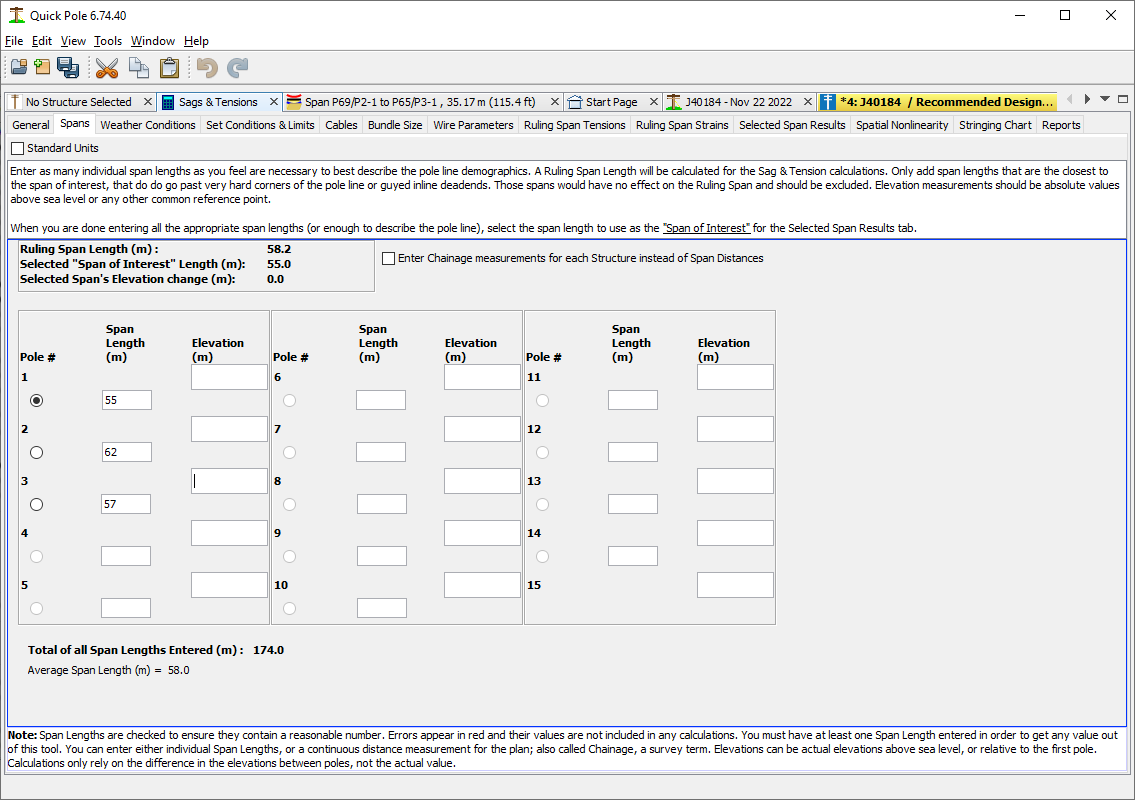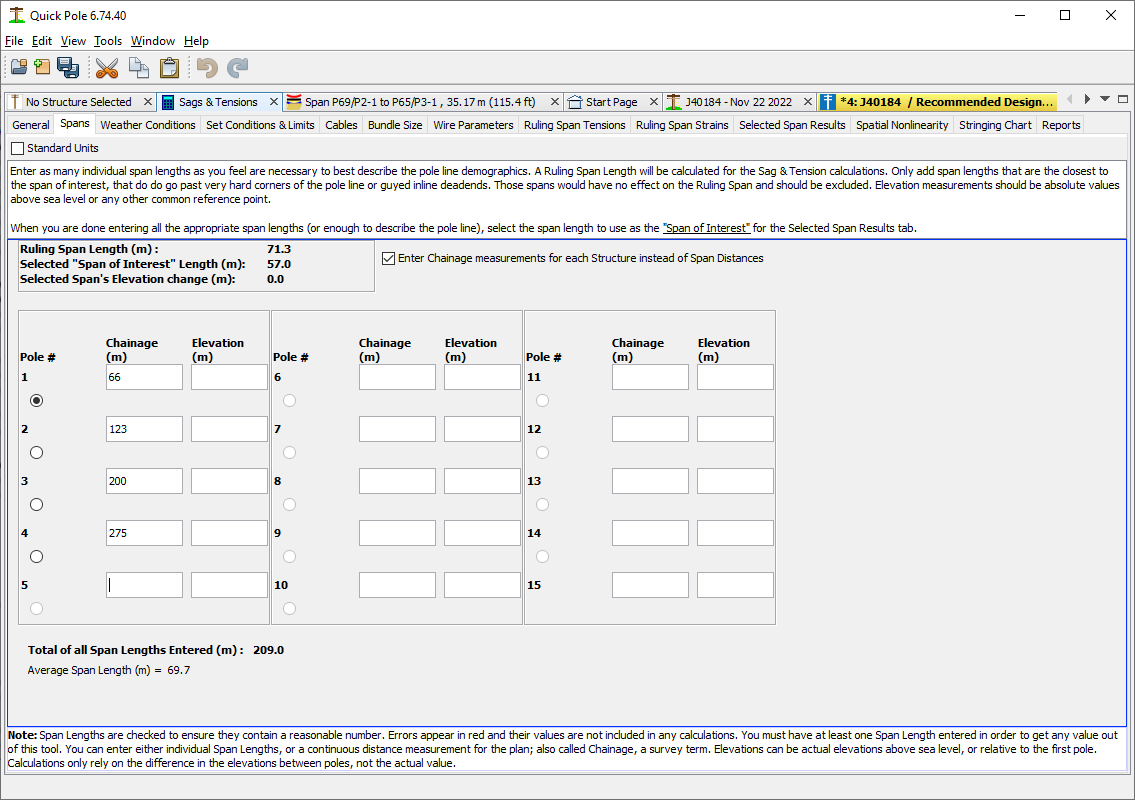Spans Tab
In this Window Tab you can enter many poles in sequence in a Pole Line. Please Note that you should not include poles that go past a deadend framed structure (for the wire/cable you are evaluating).

This entry means is intended for a section of pole line that contains tangent and cornered poles, but not head guyed or otherwise deadended poles. The reason is that poles past deadends have no impact on the Ruling Span for the poles prior to the deadend. The concept of a "Ruling Span" is that when you have many pole spans in a pole line with varying span lengths, there is a weighted averaging that happens to the sags and tensions in the line that becomes similar to the same pole line with all poles having the same span length - the Ruling Span. Quick Pole uses the Ruling Span formula provided by Rural Utility Services (RUS) Design Bulletin 1724E-200.

The Ruling Span is calculated for the Pole Spans entered and is displayed near the top. As additional information the total of all spans entered and the average span length are displayed near the bottom. Each span is able to be selected with the Radio Buttons between the sequential pole numbers. For greater certainty the selected span length and elevation height difference between the attachment points on the adjacent poles is repeated near the top. The significance of selecting a span is that it triggers the "Selected Span Results" tab to display results specific to that span. The other tabs "Ruling Span Summary Results" and "Ruling Span Strain Details" go into great depth displaying the calculated results for the Ruling Span.
It should be noted that while Quick Pole will calculate a Ruling Span distance and generate results for a span of the same length, the Ruling Span value is not actually used in the Sag & Tension calculations. It uses the actual installation stringing tension as it's starting point for each span and then calculates the Sag & Tension values. The concept of a Ruling Span was developed historically as a way of recognizing the effects of hanging insulators and wooden poles deflecting and "averaging" the effect of shorter and longer spans under loaded conditions.
If you have pole span data captured in typical survey format, by selecting the "Enter Chainage..." Checkbox you can enter the values collected directly, as opposed to calculating each span separately. This helps reduce input errors.

The chainage measurement is the horizontal distance measured from the first pole, not the actual physical distance between the poles. Surveyors that are familiar with surveying roadways or properties would have no trouble providing the measurements this way. This tab is geared towards them.
The elevations work the same as when using span lengths. You can enter the actual elevations of the attachments or you can enter the relative difference from the first pole.